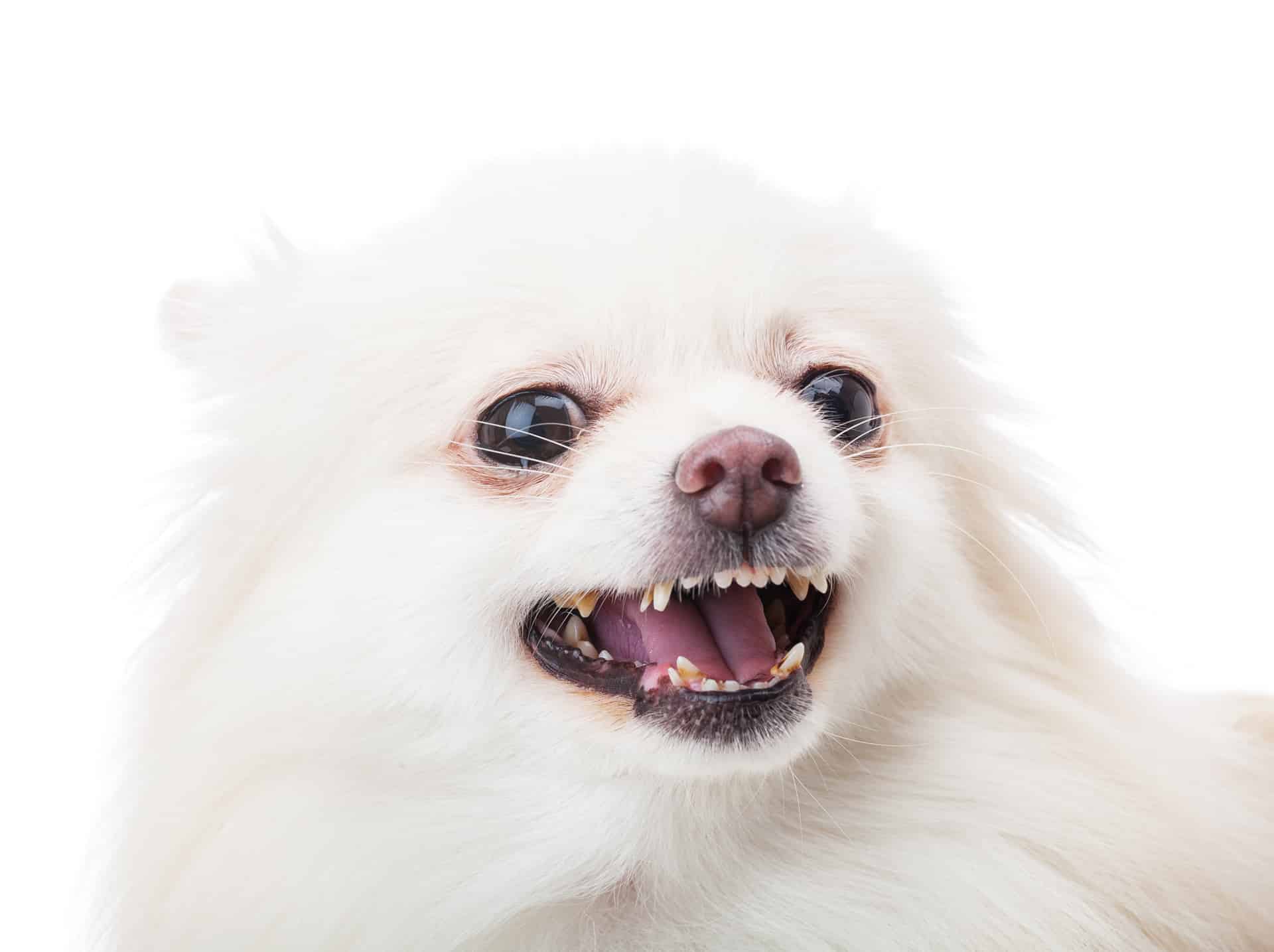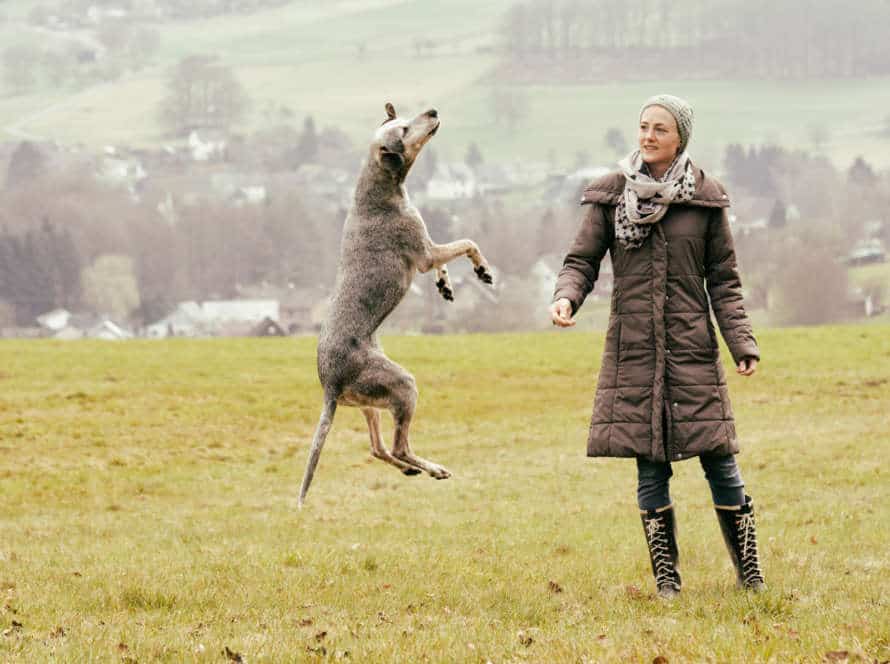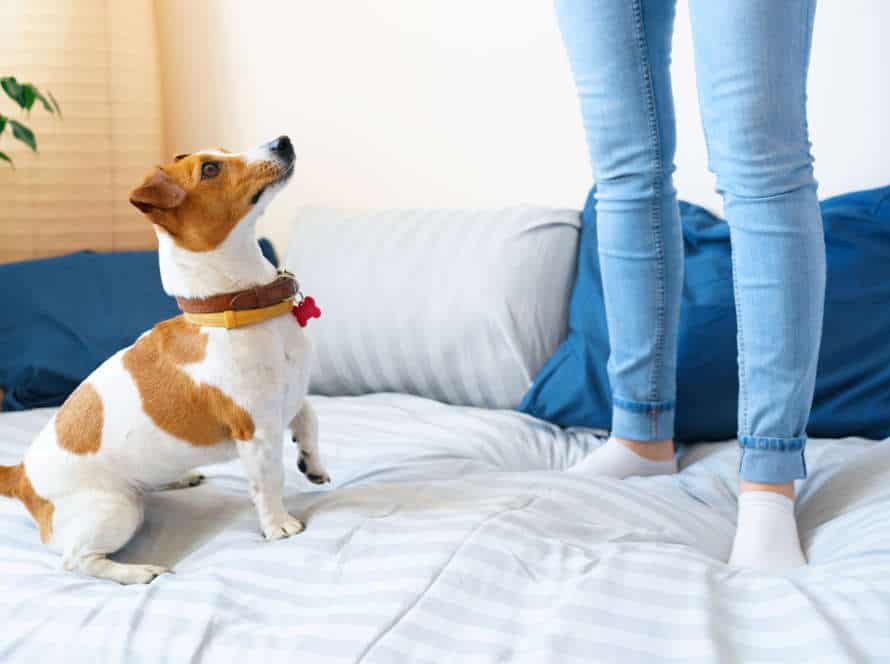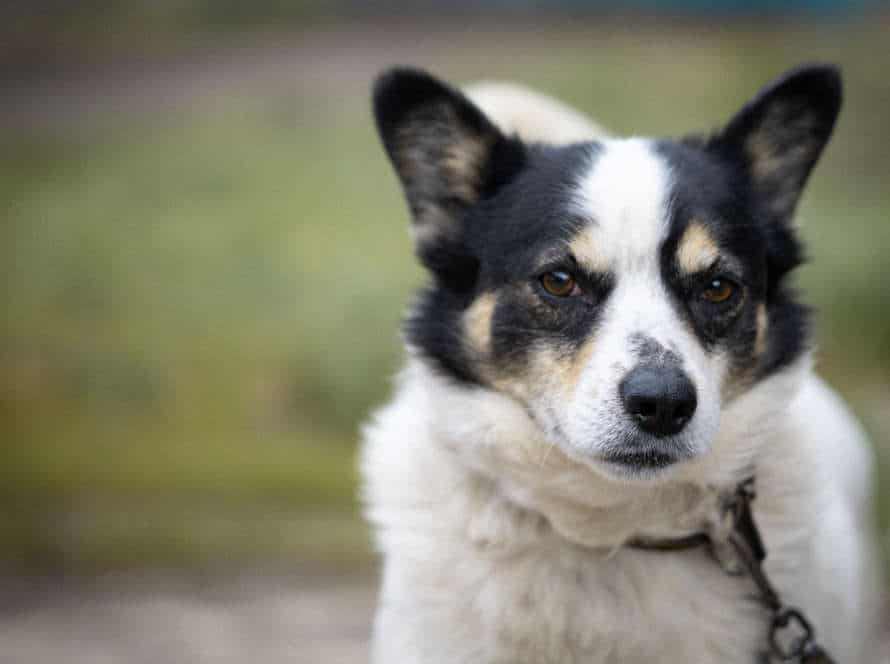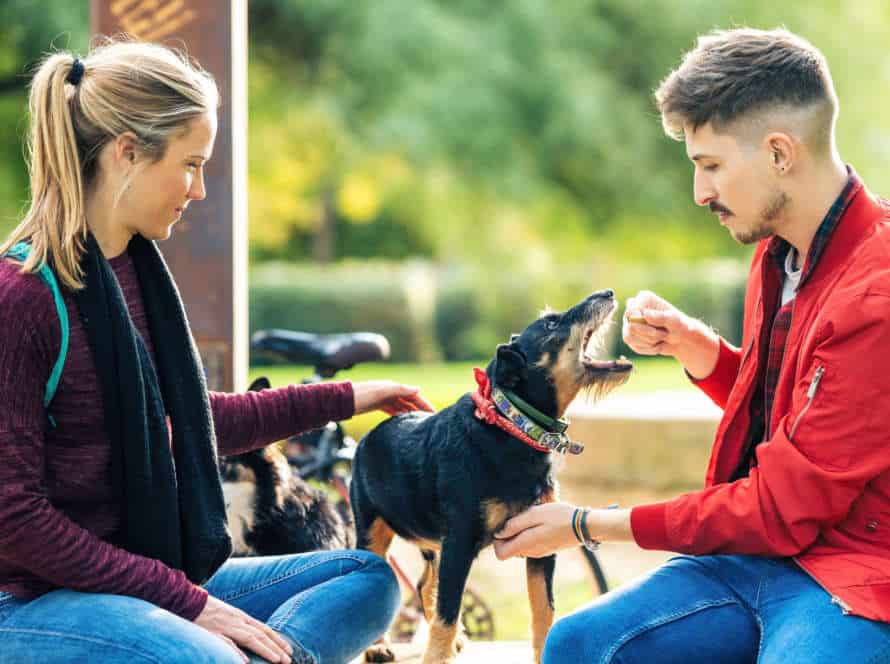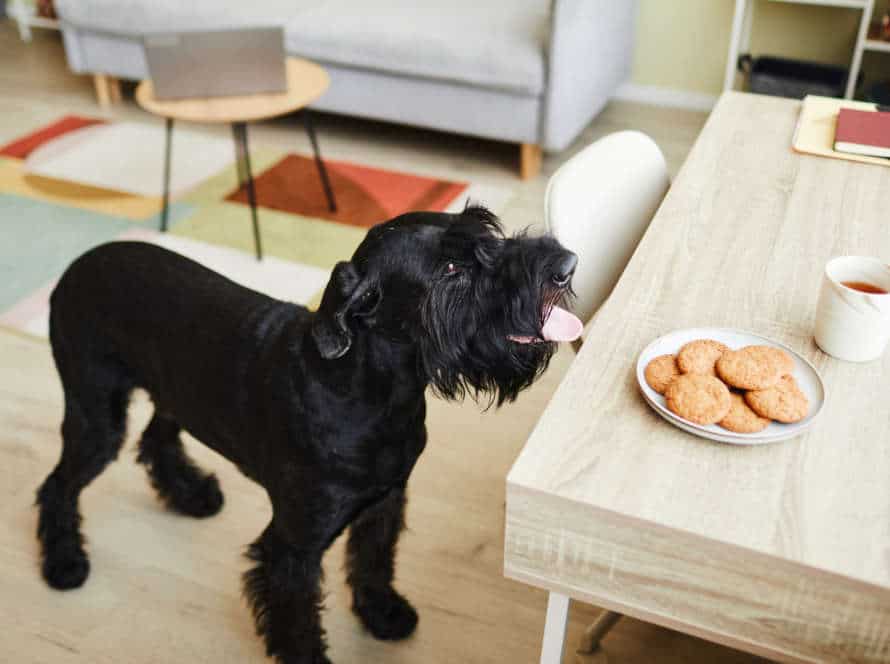Understanding Puppy Aggression
Puppies are curious and fun! But sometimes they can be aggressive. This can be expressed through nipping or biting. Knowing the difference between these two actions can help you better understand your pup. In this article, we will discuss puppy aggression and how to tell the difference between nipping and biting.
What is puppy aggression?
Puppy aggression is any aggressive behavior displayed by young dogs. This can be towards people or other animals. Nipping and biting are common forms of aggression.
But they don’t always mean the pup is aggressive. Nipping is normal and is not meant to cause harm. Usually, pups learn not to nip through socialization and training.
Biting however is aggressive and can cause harm. It’s often caused by fear, stress, or lack of training. Biting must be addressed quickly to avoid injury and legal issues for the pet owner.
It’s important to distinguish between nipping and biting and get professional help if needed to address aggressive puppy behavior.
Differences between nipping and biting
It’s vital to distinguish between nipping and biting when tackling pup aggression, as they can signify varied levels of aggression and demand different methods of training.
Nipping is a speedy, soft bite that is usually meant as a fun gesture or a way for the pup to check out its milieu. It’s common with young puppies and can usually be stopped with basic training such as transferring the pup’s attention or yelping to indicate to the puppy that it hurt you.
Biting, however, is a more intense and deliberate behavior that can result in real harm. It’s important to immediately address biting behavior and look for expert help if the behavior continues.
Recognizing the contrast between nipping and biting can aid pet owners in supplying suitable training and guaranteeing the safety of the puppy and those around it.
Why do puppies exhibit aggressive behavior?
Puppies can act aggressive for multiple reasons, such as fear, lack of socialization, overstimulation and playfulness.
Nipping and biting are common types of aggression. Nipping is a way to explore and communicate. Biting is forceful and can cause injury. It usually shows frustration, fear, anger or territorial behavior.
Training and positive reinforcement techniques can help puppies reduce aggressive behavior. If the behavior is too hard to control, seek help from a professional dog trainer or a vet.
Nipping
Nipping is usual for young puppies. It is part of exploring their surroundings. It must not hurt and it is done with the puppy’s mouth closed. It reveals curiosity and interest. Knowing the difference between nipping and biting is essential to control puppy aggression.
Reasons behind nipping behavior
Puppies often nip, but it’s different to biting. Nipping is part of a pup’s development and has different purposes. Knowing why your puppy nips can help you train them and avoid aggression.
Reasons for nipping:
- Teething – New teeth coming in can be painful. Chewing can help relieve the discomfort.
- Playful – They may nip as they are full of energy and show excitement.
- Socializing – Nipping helps puppies learn social cues from their littermates.
- Defense – Fear or discomfort can cause them to nip. It’s important to address these feelings.
By understanding why your puppy nips, you can give them the right training to prevent aggression and encourage good behavior.
Techniques to stop nipping
Puppies nipping is a natural thing, but can be troublesome if not managed early. Nipping is different from biting – it is where they ‘mouth’ or ‘bite’ someone or something as a game or to explore. Here are tips for stopping puppy nipping:
- Redirecting: If puppy nipping occurs, move their attention to a toy or treat. This shows them what is okay to bite and what isn’t.
- Positive Reinforcement: Praise your puppy when they stop nipping and give them a treat. This connects good behavior with a reward.
- Time Out: If puppy keeps nipping, say “ouch” firmly and don’t give your attention for a couple minutes. This teaches them nipping is not okay.
- Consistency: It is important to be consistent in training and work with your puppy regularly to instil good habits. With time and patience, you can stop puppy nipping.
Positive reinforcement training to prevent nipping
Puppies often nip, but it’s possible to stop this with positive reinforcement training. Nipping is different from biting. It’s a soft, playful bite used to interact with other dogs.
Here are tips to prevent nippping with positive reinforcement:
- Reward good behaviour. Give treats, toys and praise when your puppy stops nipping.
- Ignore bad behaviour. If your puppy does nip, don’t give them attention and walk away.
- Be consistent. Always reward positive behaviour. This will help your puppy know what’s ok and what isn’t.
With patience and consistent training, positive reinforcement can help stop puppy nipping.
Biting
Puppy biting is a usual type of aggression. It’s good to recognize the contrast between biting and nipping. Let us learn about puppy biting.
Reasons behind biting behavior
Puppies can bite or nip for many reasons. Knowing why can help you manage it.
- Teething: Puppies have teething pain, so they chew to reduce discomfort.
- Overstimulation: Puppies can get too hyped, so they nip or bite to release energy.
- Fear: Scared puppies bite to defend.
- Testing: Puppies can nip or bite while learning what’s okay and not okay.
- No Socialization: Puppies who don’t meet other dogs or people can become anxious or aggressive, including biting.
Knowing the cause of puppy biting helps you use the right training and reward positive behaviour.
Techniques to stop biting
Puppy aggression can show up as nipping or biting. Knowing the difference and using the right techniques can stop the biting.
Nipping is not as bad as biting; it often happens when a puppy is playing or exploring. But, if nipping turns into biting and causes harm, try these tips:
- Don’t use physical punishment – it could make the puppy scared or anxious.
- Give the puppy safe toys like ropes or rubber toys to play with instead.
- Make a loud noise when the biting starts, like clapping your hands.
- Don’t move or push the puppy – it just encourages the biting.
Knowing that puppies bite to talk and using the tips above can help you put an end to puppy biting.
Impacts of biting on puppy development and socialization
Puppies naturally bite, but if not addressed properly, it can interfere with their growth and socializing. It’s important to know the contrast between nipping and biting, so as to give the right training and discipline.
Nipping is a brief, painless bite puppies give when they are playing or discovering. It isn’t wrong and should not be punished, instead redirected.
Biting is more aggressive and can cause distress, dread and injury. It’s vital to forbid biting behavior and educate your puppy good ways to interact with people and other dogs.
The right socializing and training can stop biting behavior and make sure your pup grows up to be a well-behaved, socially adjusted adult dog. Pro Tip: Consistency, positive reinforcement and tolerance are fundamental for training a well-behaved and socialized puppy.
Prevention and Management of Puppy Aggression
Puppy aggression has many expressions, like nipping and biting. Controlling it can be tough. These behaviors are typical for puppies, so they must be managed in a special way. It is vital to recognize the signs of aggression and take action to stop it in puppies. Here’s an overview of puppy aggression and how to handle it.
Socialization exercises
Socialization exercises are key to preventing and managing puppy aggression. They help your puppy become confident in a variety of situations, and interact with other dogs and humans appropriately. Here are some effective exercises:
- Let your pup play with vaccinated, friendly dogs, under supervision.
- Introduce them to crowds, loud noises and new objects.
- Use positive reinforcement techniques such as clicker training to teach commands and good habits.
- Take them to new environments, expose them to new experiences like car rides, vet visits and puppy classes.
- Teach your puppy bite inhibition to set communication boundaries.
Continued socialization and training will help your pup become a friendly and well-adjusted dog, who gets along with others and avoids aggressive behavior.
Positive reinforcement training techniques
Positive reinforcement training techniques focus on rewarding good behavior to make it happen more often, instead of punishing bad behavior. This is a great way to train puppies and prevent aggression.
Here are some helpful tips for puppy training:
- Set up a reward system, like treats or praise, to encourage good behavior – and keep it consistent.
- Use positive cues, like a clicker, to let your puppy know they did something good.
- Teach appropriate socialization, such as greeting people and animals calmly.
- If your pup starts nipping or biting, redirect them to an appropriate chew toy or another activity.
Preventing and managing puppy aggression requires patience, consistency, and dedication to positive reinforcement training methods. FYI – Aggression or punishment when training a puppy only causes fear and increases the risk of further aggressive behavior as it grows.
Seeking professional help in severe cases of aggression
Puppy aggression can be tackled with the right techniques. Though, if it’s serious, getting pro help is best. Warning signs of this may include: growling, snarling, baring teeth, and unprovoked biting. If you spot any of these, seek a dog trainer or behaviorist. They can work out the problem and plan a course of action. In some cases, meds may be recommended. Remember, aggression is serious and requires specialist attention to guarantee safety. Pro tip: Address aggression early to stop it getting worse.
Frequently Asked Questions
Q: What is the difference between nipping and biting?
A: Nipping is a quick, light pinch or nip with the teeth, whereas biting is a more forceful and intentional action that can cause injury.
Q: Why do puppies nip or bite?
A: Puppies may nip or bite as a form of play or because they are teething and want to relieve the discomfort in their mouths. They may also nip or bite when they are feeling scared or threatened.
Q: How can I stop my puppy from nipping or biting?
A: It is important to redirect your puppy’s behavior by offering appropriate toys or treats to chew on instead of your hands or clothing. Consistent training and positive reinforcement can also help discourage nipping and biting.
Q: Is puppy aggression a sign of a larger behavioral issue?
A: While some puppies may exhibit more aggressive behavior than others, it is important to monitor and address any concerning behaviors early on to prevent them from becoming a larger issue.
Q: Should I punish my puppy for nipping or biting?
A: It is not recommended to physically punish your puppy for nipping or biting as it can damage your relationship and trust with them. Instead, focus on positive reinforcement and redirecting their behavior to encourage appropriate play.
Q: When should I seek professional help for my puppy’s aggression?
A: If your puppy’s aggressive behavior seems excessive or persistent, it may be beneficial to seek the guidance of a professional trainer or behaviorist to address the issue before it becomes more serious.

